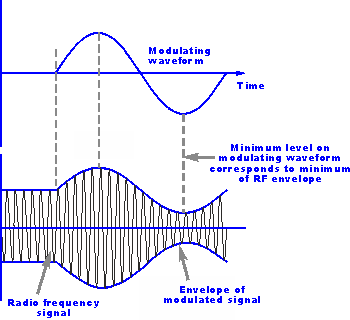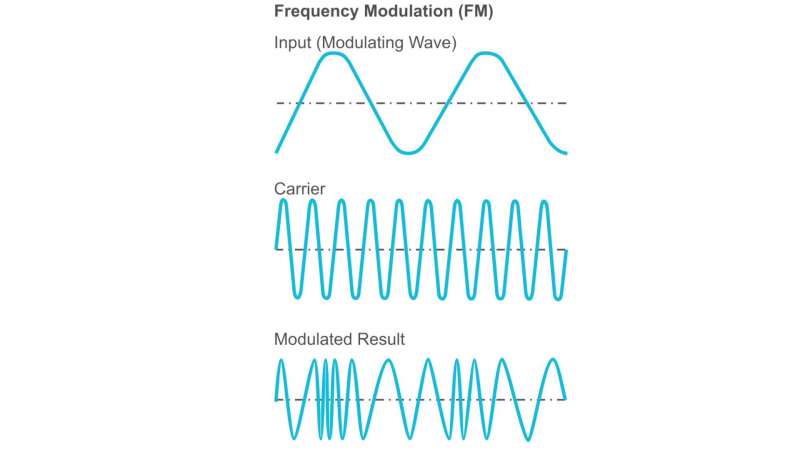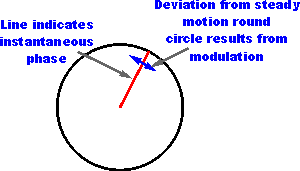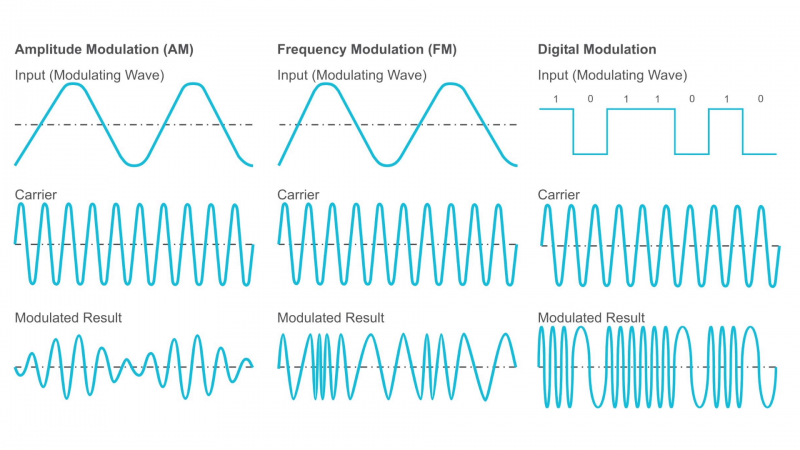Modulation Types & Techniques:
Today vast amounts of information are communicated using radio communications systems. Both analogue radio communications systems, and digital or data radio communications links are used.
However one of the fundamental aspects of any radio communications transmission system is Modulation, or the way in which the information is superimposed on the radio carrier.
In order that a steady radio signal or “radio carrier” can carry information it must be changed or modulated in one way so that the information can be conveyed from one place to another.
There are very many ways in which a radio carrier can be modulated to carry a signal, each having its own advantages and disadvantages. The choice of modulation have a great impact on the radio communications system. Some forms are better suited to one kind of traffic whereas other forms of modulation will be more applicable in other instances. Choosing the correct form of modulation is a key decision in any radio communications system design.
Basic types of modulation:
There are three main ways in which a radio communications or RF signal can be modulated:
Amplitude modulation, AM:
As the name implies, this form of modulation involves modulating the amplitude or intensity of the signal.

- Amplitude modulation was the first form of modulation to be used to broadcast sound, and although other forms of modulation are being increasingly used, amplitude modulation is still in widespread use. Read more about Amplitude Modulation.
Frequency modulation, FM:
This form of modulation varies the frequency in line with the modulating signal.

- Frequency modulation has the advantage that, as amplitude variations do not carry any information on the signal, it can be limited within the receiver to remove signal strength variations and noise. As a result is form of modulation has been used for many applications including high quality analogue sound broadcasting. Read more about Frequency Modulation.
Phase modulation, PM:
As the name indicates, phase modulation varies the phase of the carrier in line with the modulating signal.

- Phase modulation and frequency modulation have many similarities and are linked – one is the differential of the other. However phase modulation lends itself to data transmissions, and as a result its use has grown rapidly over recent years. Read more about Phase Modulation .
Each type of modulation has its own advantages and disadvantages, and accordingly they are all used in different radio communications applications.
In addition to the three main basic forms of modulation or modulation techniques, there are many variants of each type. Again these modulation techniques are used in a variety of applications, some for analogue applications, and others for digital applications.

Angle Modulation:
Angle modulation is a name given to forms of modulation that are based on altering the angle or phase of a sinusoidal carrier. Using angle modulation there is no change in the amplitude of the carrier.
The two forms of modulation that fall into the angle modulation category are frequency modulation and phase modulation.
Both types of angle modulation, namely frequency modulation and phase modulation are linked because frequency is the derivative of phase, i.e. frequency is the rate of change of phase.
Modulation combinations:
It is possible to use forms of modulation that combine both amplitude and angle modulation components. In this way enhancements in performance can be gained.
- Quadrature amplitude modulation, QAM: Using this form of information amplitude and phase information are used to carry the signal. Data is modulated onto In-phase and Quadrature elements of the signal: I & Q and the constellation forms a number of points in the two planes. Read more about Quadrature amplitude modulation.
- Amplitude & Phase Sift Keying, APSK: Using APSK, the constellation can be arranged to optimise the peak to average power ratio and fewer amplitude levels cab be set when compared to QAM. This enables RF power amplifiers to operate more efficiently. Read more about Amplitude & Phase Shift Keying.
